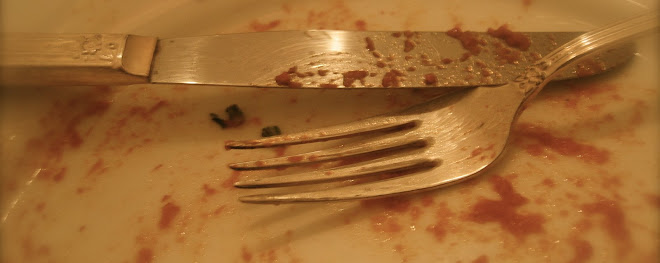 Usually dinner is all planned out in my head, if not on a shopping list, by the time I get to the grocery store. Sometimes, out of necessity and panic, I get to the market without even an idea of what to cook for dinner. The pressure of the hour and my expectant family can get the synapses firing, and I’ll come up with something. It may not be inspired (grilled chicken pieces, a steak), but it will be dinner.
Usually dinner is all planned out in my head, if not on a shopping list, by the time I get to the grocery store. Sometimes, out of necessity and panic, I get to the market without even an idea of what to cook for dinner. The pressure of the hour and my expectant family can get the synapses firing, and I’ll come up with something. It may not be inspired (grilled chicken pieces, a steak), but it will be dinner.Once in awhile something near magic happens when I’m suddenly hit with a flash, a combination of my personal cravings and what looks good in the market. That’s what happened the other day when I stepped into Whole Foods; suddenly I knew that I wanted to braise some pork shoulder for dinner.
Pork shoulder is succulent and satisfying. As they say in Babe, “Pork is a nice sweet meat,” and a braised pork shoulder doesn’t get a chance to dry out. The only problem with my situation was that I hadn’t ever braised a pork shoulder before. I needed a recipe, and quick. I was lucky because Whole Foods is one of those schmancy markets with a shelf of cook books for sale—and not all of them were by Mollie Katzen! One was from Chez Panisse, and Alice Waters offered a recipe for 3-4 lb pork shoulder braised with tomatoes, onions, garlic, fennel seeds, fresh thyme, and olives. I decided to go for it (except for the olives), and set about making a mnemonic device to help me remember the quantities and procedures.
Here’s how I made it:
1. Preheat oven to 325.
2. Sauté 1 medium onion in a large dutch oven. Add in 2 stalks of diced celery and 2 diced carrots. Add in 4 medium tomatoes. [Note: Waters called for fresh and wouldn’t make this recipe in winter because tomatoes aren’t in season. I used canned and would braise a pork shoulder two hours in August in New York.] Add in 1 teaspoon crushed fennel seeds and 1 teaspoon of fresh thyme.
3. Dry the roast and stud it with garlic slivers. Put it in the pot with all of the sautéed ingredients. Add more liquid to cover about 1/3 of the roast. Put the lid on the pot and put it in the oven.
4. Check it in about an hour. My automatic thermometer indicated that it was done at 145, and I will never tell you to cook your pork so low. USDA says to cook it to 160. That’s all I’m going to say about it.
5. Take the roast out of the now amazing broth and let it rest. In the meantime, pass the brothy mixture through a Mouli food mill (aka just about my favorite cooking tool). Cook the liquid down until it is pretty thick. Skim off any foam and as much fat as you can.
6. Slice the roast and serve with the sauce.7. Wait for the next inspiration.



